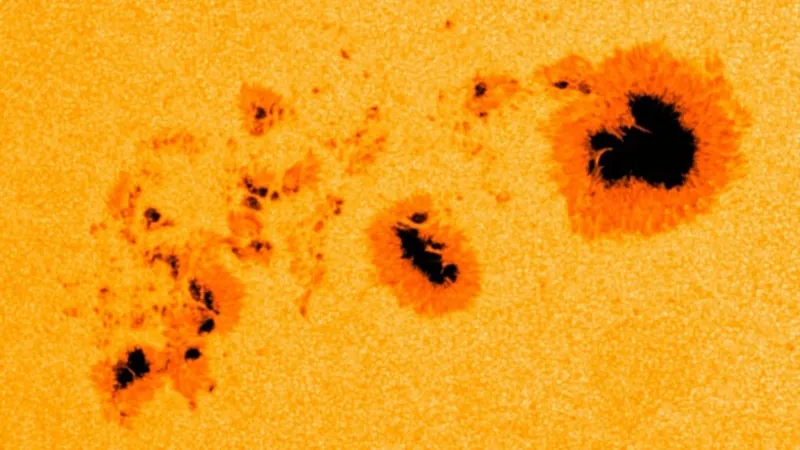
Revolutionary Discovery: Scientists Crack 400-Year-Old Solar Enigma
2025-07-15
Author: Wei
A Historic Solar Mystery Unveiled
For over four centuries, sunspots have captivated scientists since Galileo first pointed his telescope at them in the early 1600s. These intriguing dark patches on the Sun's surface can linger for days or even months, leaving researchers puzzled about the secret behind their remarkable stability.
The Breakthrough Study
A groundbreaking study published in *Astronomy & Astrophysics* has finally unraveled this age-old mystery. An international team, spearheaded by experts from Germany's Institute of Solar Physics, has devised a revolutionary method for analyzing sunspot stability, uncovering the delicate equilibrium that keeps these solar phenomena intact.
What Are Sunspots?
Sunspots are zones of intense magnetic activity on the Sun, comparable to the magnetic fields found in MRI machines, but spanning areas larger than our planet. Although they appear dark due to their cooler temperatures compared to the surrounding solar surface, a sunspot isolated away from the Sun's rays would shine even brighter than a full Moon!
The Solar Cycle and Its Consequences
Sunspots follow an 11-year cycle, peaking when solar storms are most likely to occur. During these high-activity phases, unstable magnetic configurations can instigate explosive events like coronal mass ejections and solar flares. Such celestial phenomena can disrupt satellite communications and, in extreme cases, even lead to catastrophic power outages on Earth.
Proving the Balance
Historically, scientists believed that the stability of sunspots resulted from an equilibrium between gas pressure and magnetic forces. However, confirming this balance proved difficult due to atmospheric disturbances affecting ground-based observations.
A Game-Changing Technique
The research team achieved a major breakthrough by enhancing a technique first developed at the Max Planck Institute for Solar System Research. Their improved method effectively eliminates the blurring caused by Earth’s atmosphere, utilizing the German GREGOR solar telescope to capture clearer images.
Unlocking the Secrets of Sunspots
By analyzing polarized light emitted by the Sun, the researchers precisely measured the magnetic forces within sunspots, achieving results comparable to satellite observations but at a fraction of the cost. Their findings revealed that magnetic forces are perfectly balanced by pressure forces, allowing sunspots to endure on the Sun's dynamic surface.
Implications for the Future
This groundbreaking discovery isn't just an academic achievement; it has significant real-world applications. With a better understanding of how sunspots remain stable, scientists can predict when they might become unstable, increasing the likelihood of destructive space weather events.
More accurate forecasting of solar storms could play a crucial role in shielding satellites, power grids, and astronauts from hazardous radiation. As our dependence on satellite technology and electronic infrastructure continues to grow, this research represents a vital step in protecting modern society from solar threats, while marking a monumental advancement in the field of solar physics.



 Brasil (PT)
Brasil (PT)
 Canada (EN)
Canada (EN)
 Chile (ES)
Chile (ES)
 Česko (CS)
Česko (CS)
 대한민국 (KO)
대한민국 (KO)
 España (ES)
España (ES)
 France (FR)
France (FR)
 Hong Kong (EN)
Hong Kong (EN)
 Italia (IT)
Italia (IT)
 日本 (JA)
日本 (JA)
 Magyarország (HU)
Magyarország (HU)
 Norge (NO)
Norge (NO)
 Polska (PL)
Polska (PL)
 Schweiz (DE)
Schweiz (DE)
 Singapore (EN)
Singapore (EN)
 Sverige (SV)
Sverige (SV)
 Suomi (FI)
Suomi (FI)
 Türkiye (TR)
Türkiye (TR)
 الإمارات العربية المتحدة (AR)
الإمارات العربية المتحدة (AR)